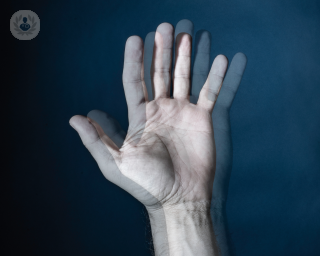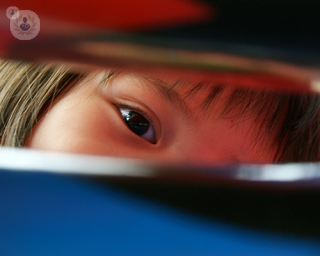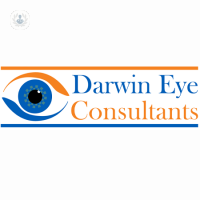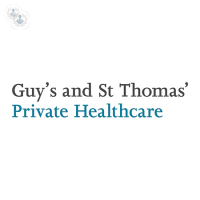Strabismus (squint)
Dr Annegret Dahlmann-Noor - Ophthalmology
Created on: 11-13-2012
Updated on: 02-14-2024
Edited by: Conor Lynch
What is strabismus?
Strabismus, also known as a 'squint', means that the eyes are not aligned. It can cause difficulties with social interaction, and a person's self-confidence. Strabismus can be classified into three types, based on the direction of the eyes:
- Convergent strabismus : One eye is looking straight, the other is looking towards the nose.
- Divergent strabismus : One eye is looking straight, the other is looking outward.
- Vertical strabismus : One eye is looking straight, the other eye is looking up or down.

Symptoms of strabismus:
Symptoms of strabismus may include:
- Crossed eyes
- Double vision
- Reduced vision in one eye (amblyopia)
- Uncoordinated eye movements (eyes do not move together)
- Absent or reduced depth perception
How is it diagnosed?
An orthoptist will carry out a detailed assessment of visual function, eye alignment and eye movements. This is followed by a check of the health of the eye - both front and back parts - by an ophthalmologist.
These assessments may include:
- Visual acuity test (tests how well you can read from far distance and close-up)
- Fine 3D vision
- Observation of the light refraction of the cornea (clear window at the front of the eye)
- Cover/uncover test
- Examination of the front part of the eyes
- Examination of the back part of the eye (retina and optic nerve)
Should there be any specific concerns, a basic assessment of brain and cranial nerve function (neurological) examination will also be performed.
What causes strabismus?
Strabismus can be a developmental defect, manifesting in children, or it can develop from adults, usually as a consequence of a neurological, vascular, or immunological condition, such as:
- Diabetes
- Thyroid disease (Graves' disease)
- Myasthenia gravis (a neuromuscular disease)
- Brain tumours
- Head trauma
- Stroke
Occasionally, strabismus may result following eye surgery, such as cataract surgery, retinal detachment surgery, eyelid surgery, etc. This is usually caused by an improvement in vision, which unmasks a pre-existing strabismus which didn't present before. After retinal detachment or eye socket surgery, strabismus can occur due to inadvertent involvement of one of the eye muscles.
Treatments for strabismus
Early treatment is important, particularly in children. Treatment often targets the vision in the affected eye first, as the eye alignment may improve if the eyesight improves. Treatment options may include:
- Glasses
- Wearing an eye patch (to treat amblyopia)
- Eye exercises (for convergence weakness)
- Wearing special glasses with prisms to help with double-vision
- Surgery to strengthen or weaken certain eye muscles
- Botulinum toxin injections to weaken specific eye muscles
Which specialist treats strabismus?
Ophthalmologists diagnose and treat diseases that affect eyes and vision, including eye alignment.















